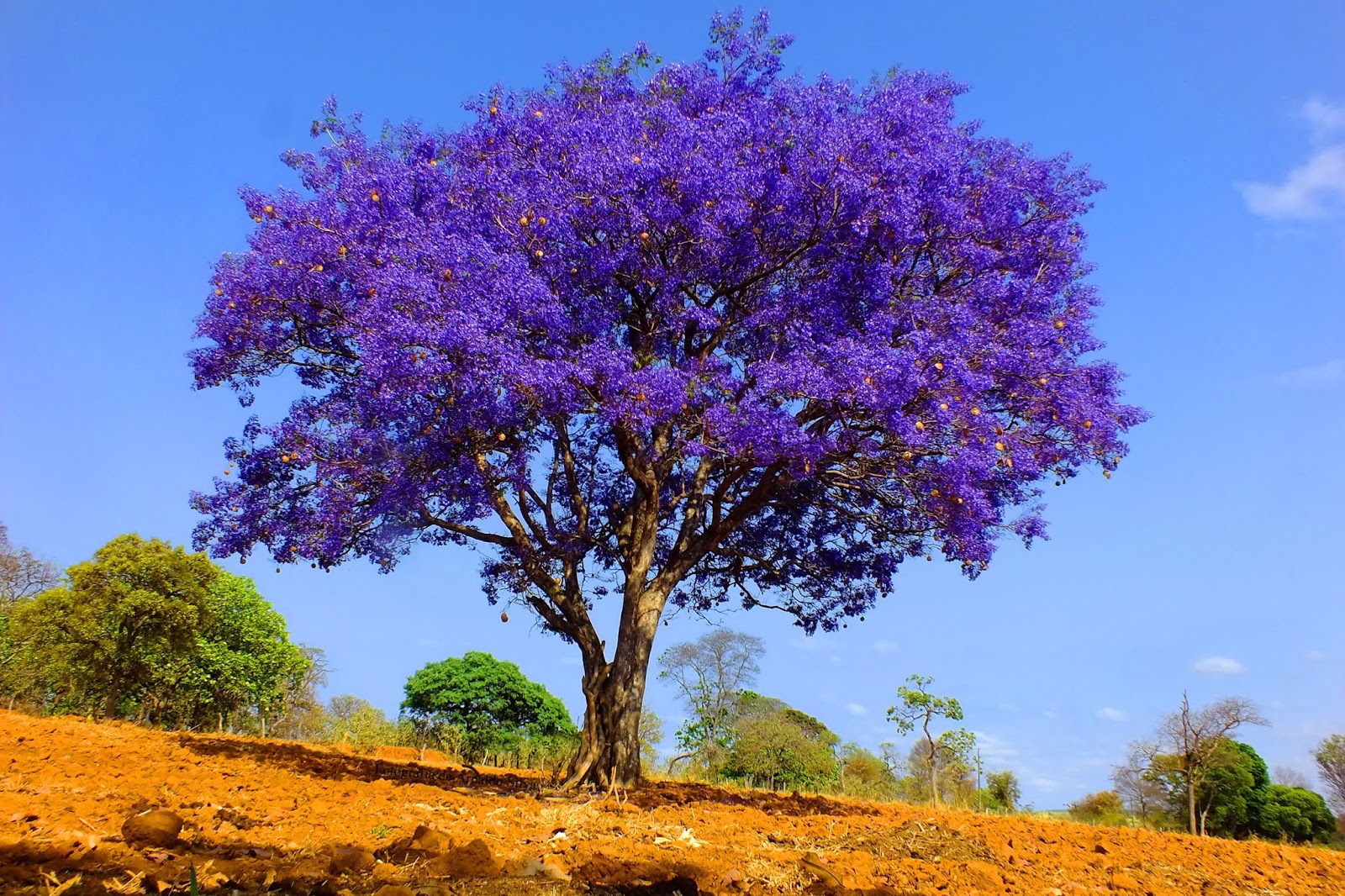Viveiro Ciprest Plantas Nativas e Exóticas Jacarandá do Campo

Jacarandá do Campo Sementes Caiçara
Jacaranda mimosifolia is known to attract some birds and insects such as the African honey bee and local and native honey-eaters. The species belongs to the family Bignoniaceae, and its members.

Jacarandá em Bom Despacho, Minas Gerais, Brasil. PCM Árvores floridas
Scientifically known as Jacaranda mimosifolia, they're a hardy tree that thrives in well-draining soil and ample sunlight, making them perfect for Australian backyards. They require very little maintenance; pruning is only ever necessary if you're after a specific shape or if you want to encourage a more robust floral display the following year.

Conheça o Jacarandá de Minas Conheça Minas
Jacaranda season is beginning across Australia as an explosion of vivid purple spreads in a wave from north to south. We think of jacarandas as a signature tree of various Australian cities. Sydney, Melbourne, Adelaide and Perth all feature avenues of them. Grafton in New South Wales hosts an annual jacaranda festival.

Viveiro Ciprest Plantas Nativas e Exóticas Jacarandá do Campo
Jacaranda is a genus of 49 species of flowering plants in the family Bignoniaceae, native to tropical and subtropical regions of the Americas [1] while cultivated around the world. The generic name is also used as the common name. The species Jacaranda mimosifolia has achieved a cosmopolitan distribution due to introductions, to the extent that.

Viveiro Ciprest Plantas Nativas e Exóticas Jacarandá do Campo
Machaerium acutifolium is a slow-growing, semi-deciduous shrub or a tree with a fairly open and irregular crown; it can grow from 2.5 - 18 metres tall. The cylindrical bole is 40 - 60cm in diameter [. 419. , 1528. ].

Viveiro Ciprest Plantas Nativas e Exóticas Jacarandá do Campo
First, pick the jacaranda seedpods directly from the tree when brown and dried for best success. Then at home, open the brown, round jacaranda seedpods like opening an oyster's shell and remove the seeds. You are now ready to prepare the seed for planting. First, soak the jacaranda seeds in water for 24 hours.

Viveiro Ciprest Plantas Nativas e Exóticas Jacarandá do Campo
Jacaranda mimosifolia is known to attract some birds and insects such as the African honey bee and local and native honey-eaters. The species belongs to the family Bignoniaceae, and its members.

Viveiro Ciprest Plantas Nativas e Exóticas Jacarandá do Campo
Pruning a jacaranda tree. As the tree grows, prune off side shoots and aim to have just one strong, central shoot. Once the tree has around 2-3m of clear trunk, allow the canopy to shoot and develop naturally. Avoid any further pruning, as the jacaranda has an unusual response to trimming of main branches once it is established.

Jacarandá do Campo Sementes Caiçara
Grow Jacaranda in a conservatory or heated greenhouse over winter, in a well-lit position and with a minimum temperature of 5°C. From late spring to early autumn, Jacaranda can be moved outdoors to a sheltered spot in full sun. Do not grow Jacaranda in your home - it doesn't make a good house plant.

Viveiro Ciprest Plantas Nativas e Exóticas Jacarandá do Campo
But, he says, just because the jacaranda tree isn't native, doesn't necessarily mean it's a pest or weed. "They have the potential to become weeds, but that doesn't happen often. And it's definitely not considered to be a weed of economic importance. Instead, it's something to be mindful of. For example, not planting it near.

Viveiro Ciprest Plantas Nativas e Exóticas Jacarandá do Campo
To collect the seeds simply crack the seed pod open to remove the seeds. Soak the seeds. Once removed from the seed pod, soak the jacaranda tree seeds in water for 24 hours. Soaking seeds helps to speed up the germination process by softening the seed's protective outer coating. Plant the seeds in seed raising mix.

le jacaranda jacaranda mimosifolia flamboyant bleu Dadane
In Brazil it has several names: amendoim-do-campo, amendoim-bravo, jacarandá-branco, jacarandá-bana, jacarandá-do-campo, jacarandazinho, jacarandá-tã, faviero, secupiruna and uruvalheira. Several names are also used in Panama: carcuera, costilla, arbol soga, canalua, canaleto and tigre.

Viveiro Ciprest Plantas Nativas e Exóticas Jacarandá do Campo
You can grow your own jacaranda easily from the seeds that are enclosed in the ornamental pod. Collect the seed as it comes ripe in October. Fill pots or trays with a quality seed-raising mix, lightly cover the seeds with the mix and make sure to keep moist. The seeds do germinate quite readily, though the resulting plants may be variable in.

Viveiro Ciprest Plantas Nativas e Exóticas Jacarandá do Campo
Caviúna-do-cerrado: Portuguese: Provided by: [A].Brazilian Flora 2020 project - Projeto Flora do Brasil 2020; Jacarandá-do-campo: Portuguese: Provided by: [A].Brazilian Flora 2020 project - Projeto Flora do Brasil 2020; Jacarandá-do-cerrado: Portuguese: Provided by: [A].Brazilian Flora 2020 project - Projeto Flora do Brasil 2020

Viveiro Ciprest Plantas Nativas e Exóticas Jacarandá do Campo
The jacaranda tree (or jacaranda mimosifolia) has existed in Australia for over 150 years, but it is actually native to South America. A jacaranda tree is either semi-evergreen or deciduous, depending on the climate it grows in.. Do not plant near drains, water lines, swimming pools, and paths — the jacaranda tree root system is very.

Viveiro Ciprest Plantas Nativas e Exóticas Jacarandá do Campo
caviúna-do-cerrado in language. caviúna-do-cerrado in Portuguese jacarandá-do-campo in language. jacarandá-do-campo in Portuguese jacarandá-do-cerrado in language. jacarandá-do-cerrado in Portuguese Bibliographic References. Brittonia,49 (1): 87-109,1997